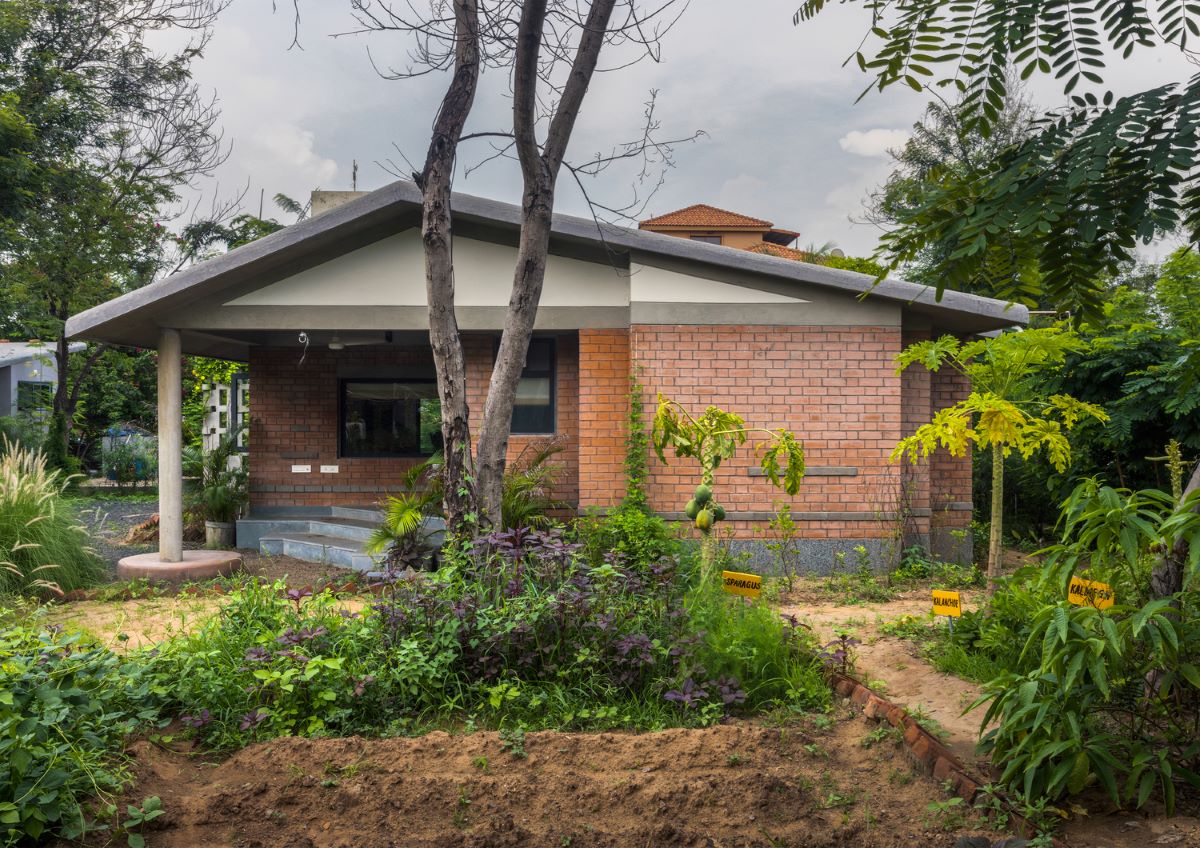
Envisaged as a profound macrocosm, Dinner Bell, by W5 Architects, is a sacred journey of discovery for the semi-urban gastronomic seeker. The space transports visitors into a captivating world of solace, subsequently as they enter from the hustling streets of this Indian tier 3 town in Uttar Pradesh.
A local visionary, having lived largely in Thailand and its deep-rooted Chinese cultural history, intended to manifest a communal dining that resonates with the essence of Buddhism and its traditional impressions.
The divine symbolism of red, guided our way to create a meditative dining experience. And mimicking the alchemy of mountain-river from the traditional Shanghai art form, we carefully orchestrated a visual story meander through the tactile layers of interpretation. The stroll advances only to unveil novel layers of ethereal disclosure.
Paths – The large canvas of ceiling is an abstraction amidst the perceptive physicality. Its subtle luminosity aids discernment through the meaningful elements and becomes a pathfinder through the surreal universe of exploration.
Thresholds – The intricately woven partitions often become the primary catalyst of engagement, ensuring transitions with tender indulgence. Echoing phonetics of the vitally located Tibetan gong renders a special layer of drama to the narrative.
Destinations – Welcoming warmly through its bar, extending a boulevard seating, the occurrence eventually paves way to discover intimate areas of the cosmos. Interesting vantages pull the viewer’s gaze to new revelations at all times. The conveniences exhibit a rather quiverish mood, offering an interesting break from the surrealistic dining experience, whilst simultaneously ensuring alliance with the preceding.
Essence – In this semi-urban north-Indian context where industrial crafting is a feeble possibility, the hand-made metaphoric materiality aims at creatively imagining crude artifacts, skillfully crafted with sophistication. And it is this organic outgrowth of the physical landscape that eventually leads to create a therapeutic experience for the diners of the dinner bell.
Every design element was meticulously crafted on-site. Mild steel pipes and circular bars were fabricated into intricate partitions, while custom-designed wallpapers, inspired by long Chinese paintings, were stitched together and printed to render a Buddhist theme. Hand-cut lacquered glass pieces, locally sourced and installed on walls, add a touch of luxury and gloss. The false ceiling, a masterpiece of ingenuity, is composed of economically available PVC plumbing pipes, hand-cut into tubes, colored red, and hung from the ceiling in a parametric form. These tubes are selectively lit with hand-fitted downlight fixtures, creating a mesmerizing interplay of light and shadow.
The trendy service stations, adorned with ornate pieces crafted from waste plywood, exude a contemporary charm. Private dining seating sets, framed in mild steel and clad with locally sourced corrugated tin sheets, offer a comfortable and stylish retreat. The bar counter, a fusion of metal mesh and metal pipes, is backlit with a hand-painted surface, adding a touch of artistic flair.
The carpentry work executed on-site by local laborers, demonstrates their exceptional skill, care and competence. The result is a space that not only delights the senses but also tells a story of craftsmanship, innovation, and local aspirations.
Gallery:
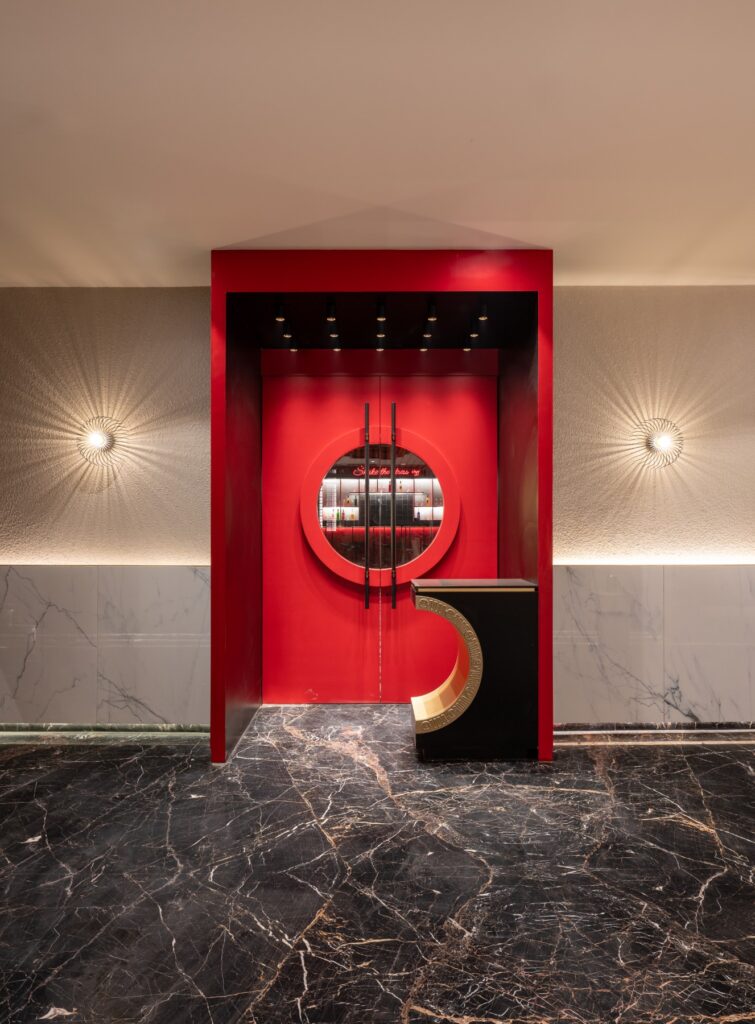
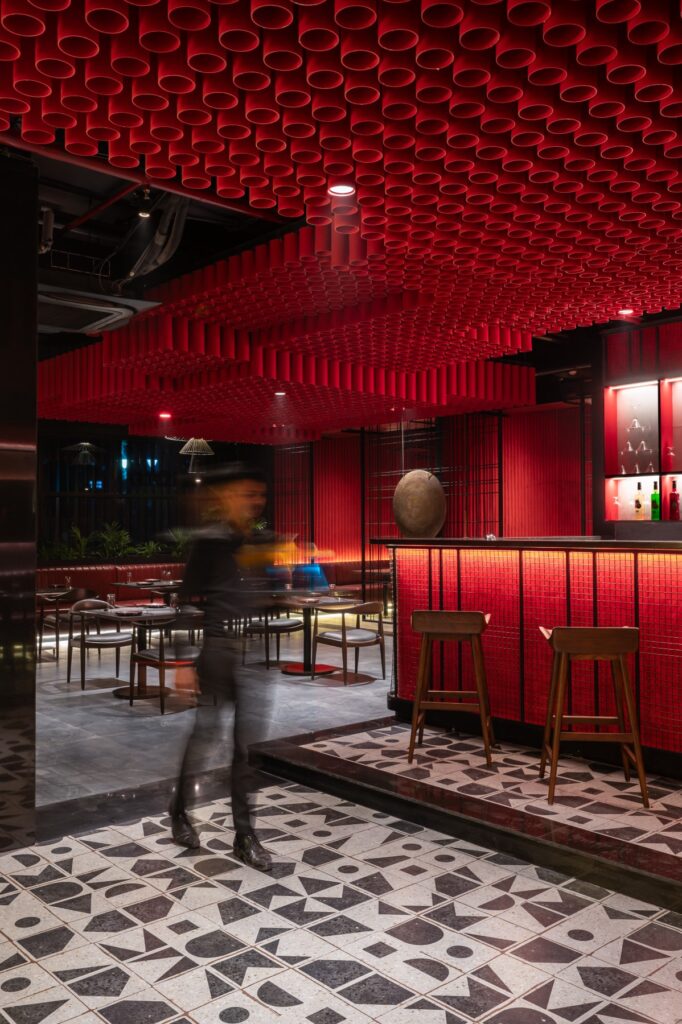
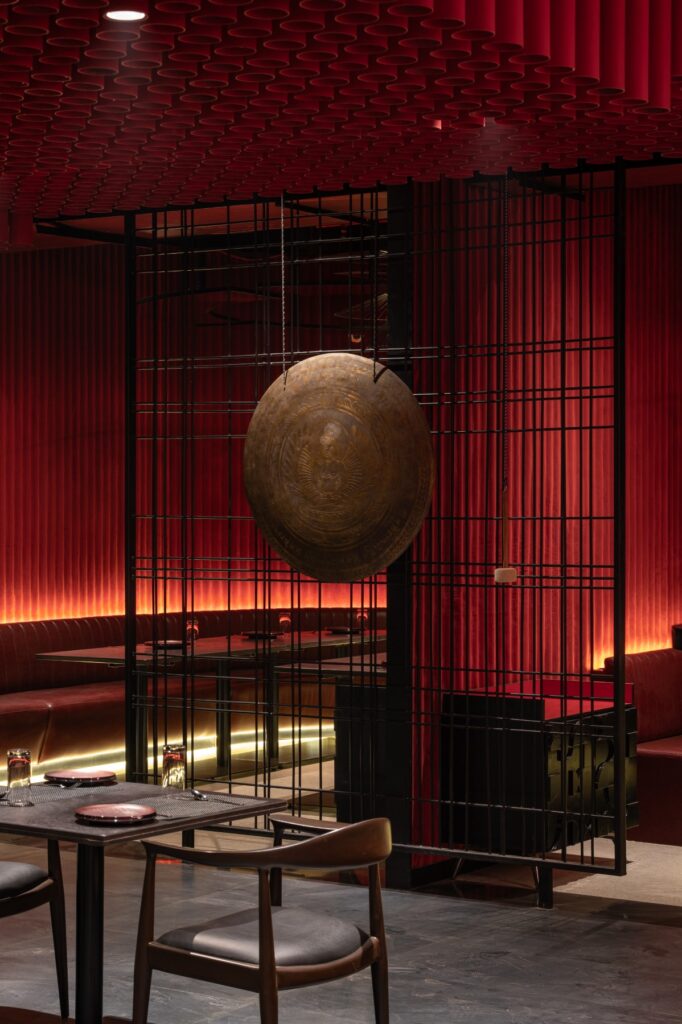


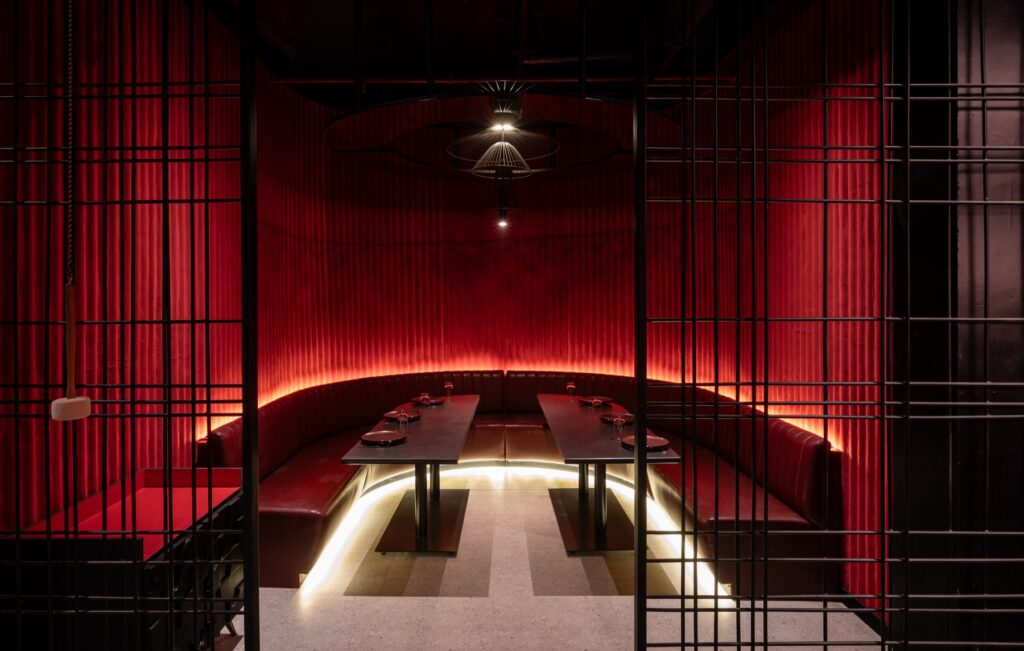
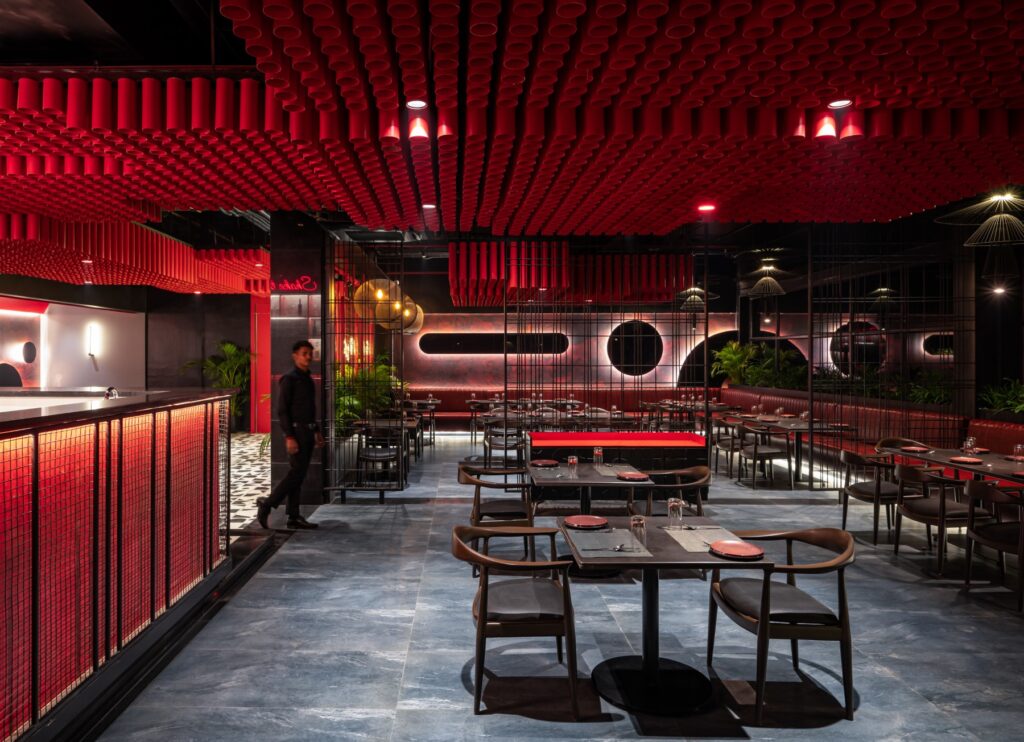
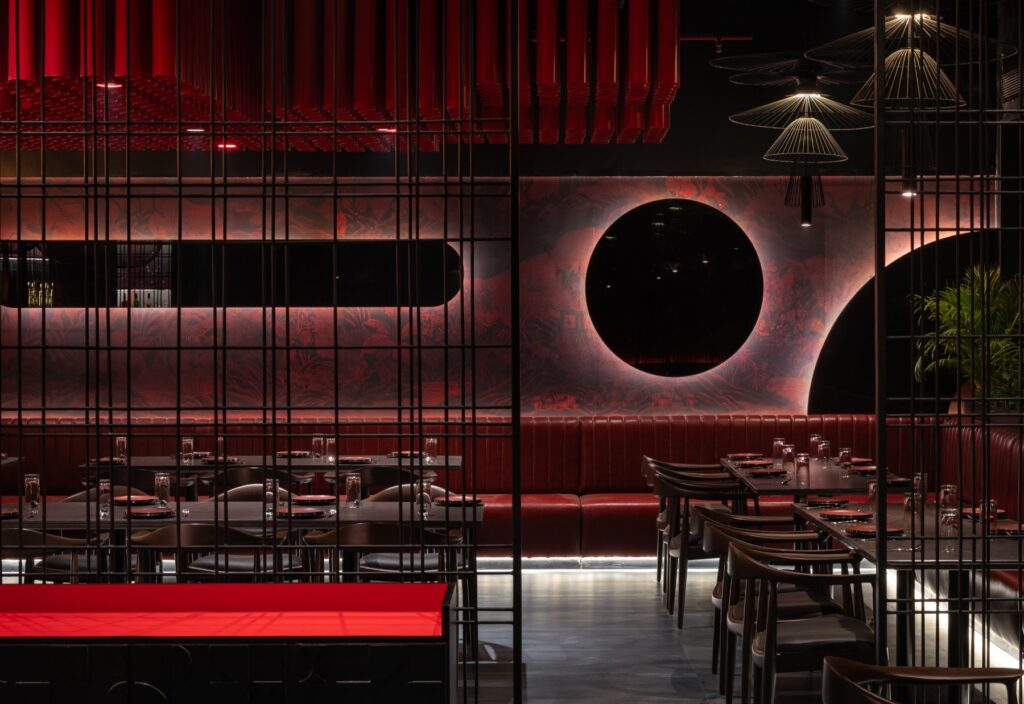
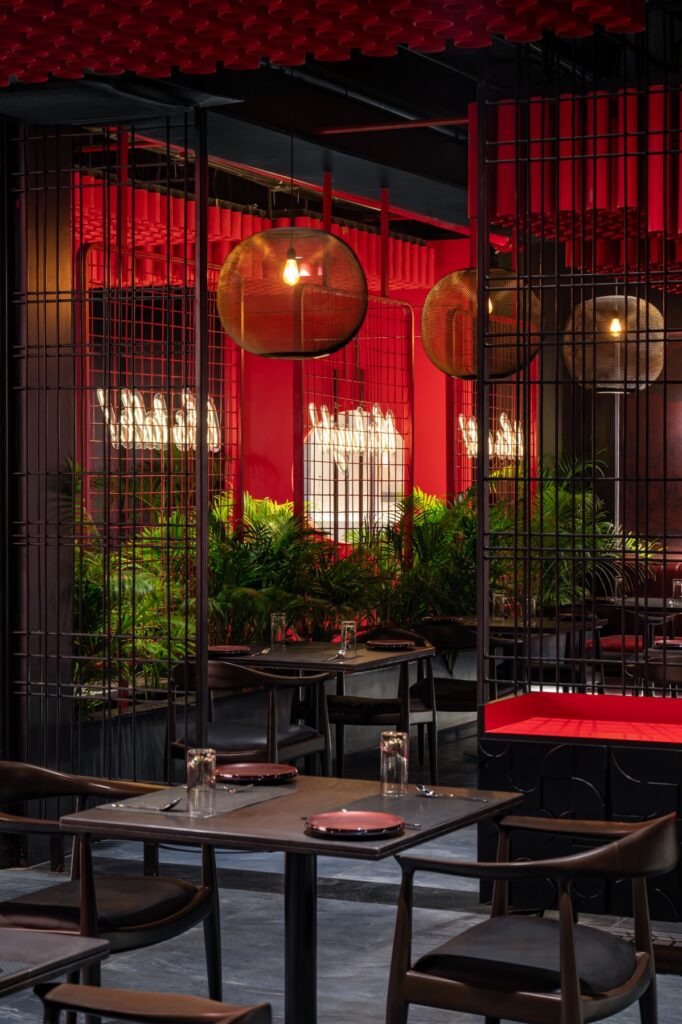


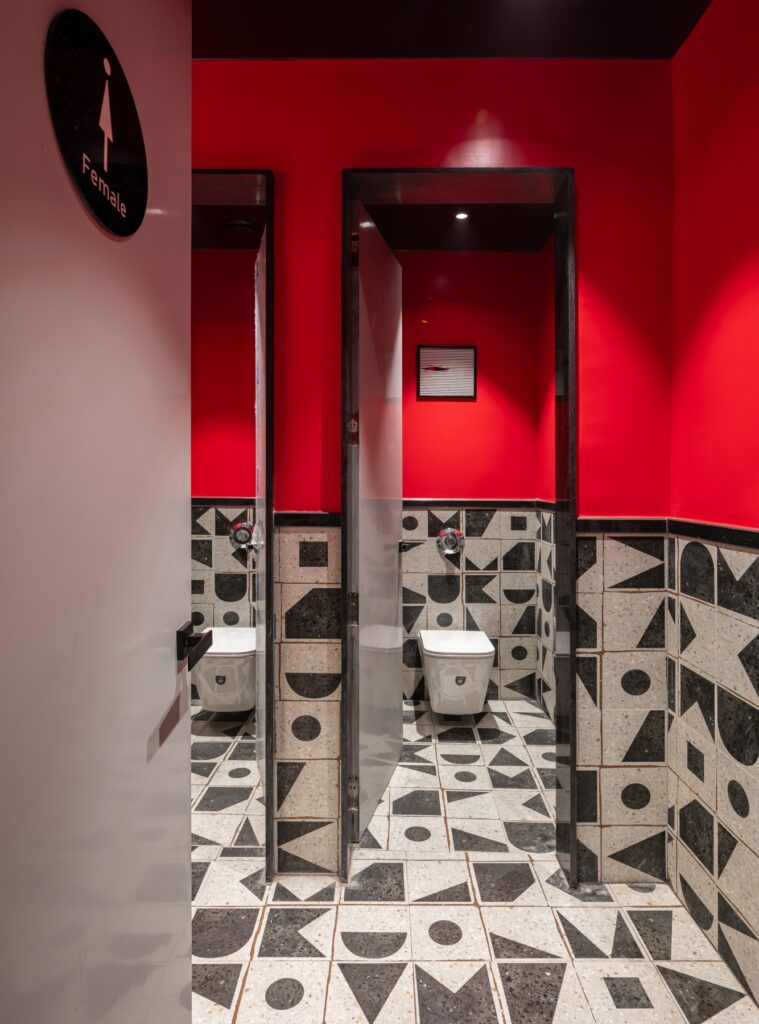


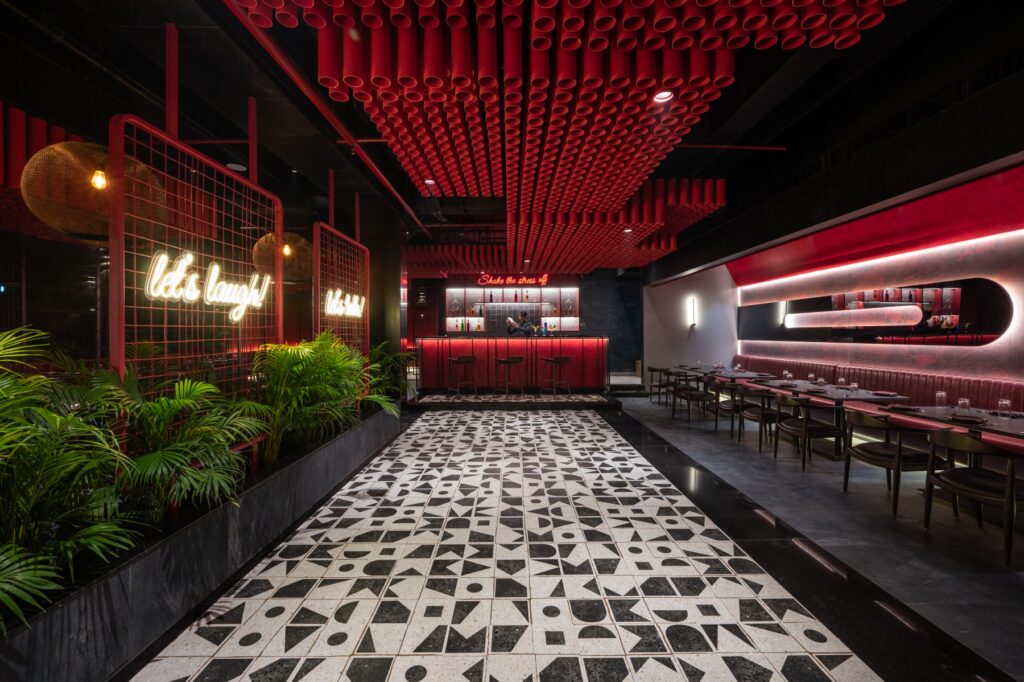
Project Drawings:


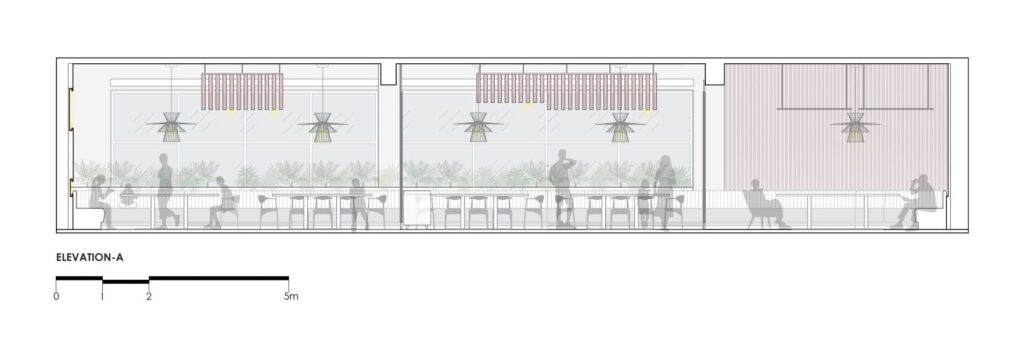
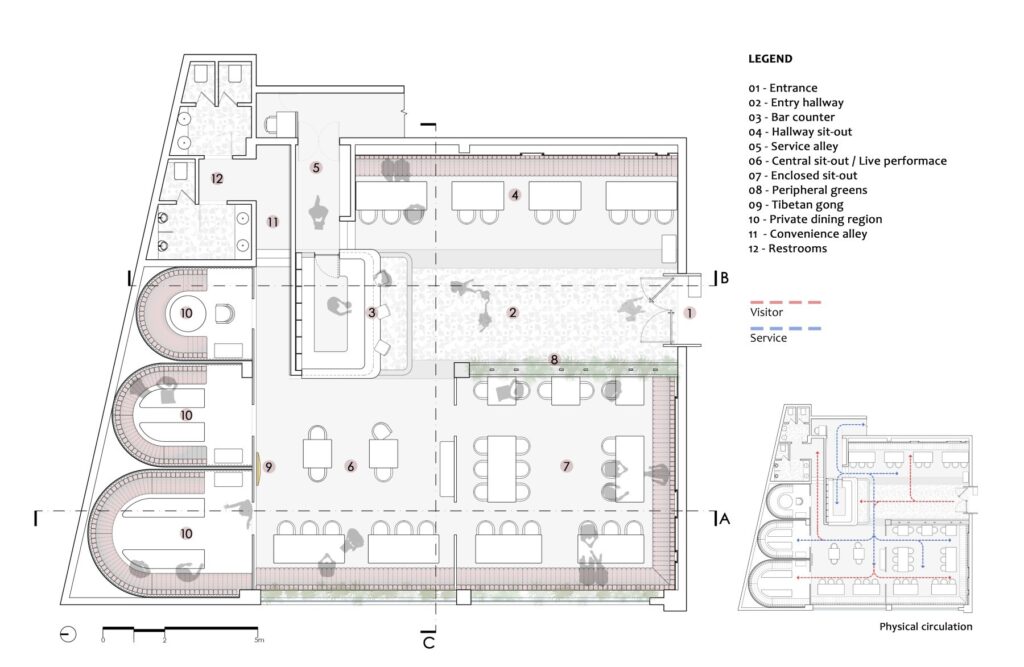

Project Details:
Name: Dinner Bell
Location: Medical Road, Basharatpur, Gorakhpur, Uttar Pradesh, India
Area: 3,068 sq. ft.
Typology: Interior Design, Hospitality
Status: Built (November 2023)
Designed by: W5 Architects
Architect / Designer: Ar. Prakhar Ranjan
Photographer: Atik Bheda
Project Description: Ar. Prakhar Ranjan

